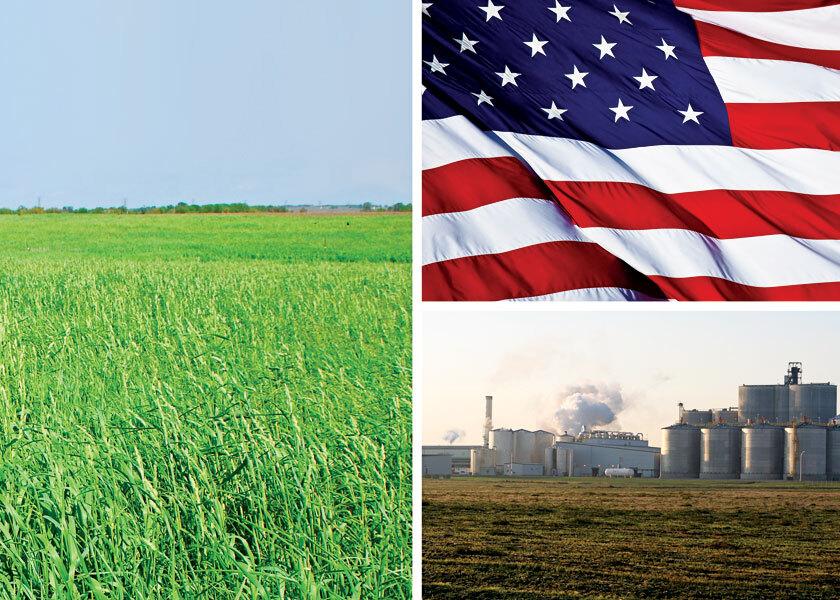What's Ag's Stake in the Senate-Passed Inflation Reduction Act?

It was a busy weekend on The Hill for the Senate as it voted on Sunday to pass the $740-billion Inflation Reduction Act (IRA).
Proposed by Senate Democrats, the bill passed by a 51 to 50 vote after Democrats “successfully” blocked most of the 41 proposed amendments set forth by Republicans, according to Jim Wiesemeyer, ProFarmer policy analyst.
Politics aside, what does this reconciliation bill mean for ag?
Biofuels Big Day
$369 billion will be dedicated to energy programs, which includes biofuels. Wiesemeyer says this funding was made possible by one man in particular.
Sen. Joe Manchin (D-W.Va.) upended Democrat-led reconciliation bills in the past due to their strict climate focus. Manchin turned his reconciliation bill “nay” to “yea” this round only after securing numerous biofuel provisions, including:
1. Funding for blender pump and biofuel infrastructure
2. A collective $3 billion for renewable energy projects in rural areas, including USDA’s Rural Energy for America Program
3. Rural electric cooperative direct pays that allow for renewable energy tax credits
4. Extension on the $1-a-gallon tax credit for biomass-based diesel through 2024
Regarding the diesel tax credit, Wiesemeyer says once the 2024 time is up, the IRA proposes the clean fuels tax credit would vary according to the biofuel’s carbon rating.
“A temporary $1.25 per gallon tax credit would be created for sustainable aviation fuel (SAF) to serve as a bridge to the implementation of the clean fuels credit in 2025,” he wrote. “The new clean fuels credit would be in effect through 2027.”
However, the Congressional Budget Office (CBO) doesn’t feel SAF provision will do much, according to Wiesemeyer.
“The CBO scored that tax provision for the SAF at only $49 million, and it lasts for only two years exclusively for SAF,” Wiesemeyer told AgriTalk Host Chip Flory. “CBO clearly doesn’t think a lot of this provision.”
Farm Debt
According to USDA’s 2022 Farm Sector Income Forecast released in February, the U.S. farm sector’s debt will increase 3% this year to nearly $13 billion.
The IRA looks to combat this issue by delivering a $5.3 billion farm debt relief package. The provision will offer:
• $3.1 billion to “distressed” borrowers who hold direct or guaranteed farm loans
• $2.2 billion in payments to farmers who experienced discrimination in USDA loan programs
Wiesemeyer says farm debt payments will cap at $500,000 per producer, with the price tag paid by reinstating a debt relief program that was previously enabled through the American Rescue Plan in 2021 and later stopped in U.S. courts.
“We won’t know a lot of the answers on this until USDA comes up with a way to implement it,” Wiesemeyer told Flory. “They have to file their proposed regulations in the Federal Register, likely for public comments, so we’ve got a way to go on this.”
Conservation
Climate and conservation are threaded together in the IRA to deliver $18 billion in four conservation programs:
• Environmental Quality Incentives Program - $8.45 billion
• Regional Conservation Partnership Program - $4.95 billion
• Conservation Stewardship Program - $3.25 billion
• Agricultural Conservation Easement Program - $1.4 billion
With the USDA’s implementation of these programs, Wiesemeyer is told the Agency will “mitigate or address” ag’s climate contributions.
John Block, senior policy advisor at Olsson, Frank, and Weeda law firm says USDA will also be tasked with measuring the impact ag has on total U.S. greenhouse gas emissions while advocating for the use of green farming practices, like cover crops and carbon sequestration, among others.
Outside of program funding, another provision added $4 billion to fight drought in the West. Sen. Kyrsten Sinema (D-AZ) says she pushed this last-minute legislation to address an ongoing issue in her area.
The $4 billion I secured in the Inflation Reduction Act for Western drought relief and conservation is sorely need in Arizona and other states. Thank you, @nature_arizona for your support and for being a trusted partner as we work to secure Arizona's water future. pic.twitter.com/iUxq0P4d2n — Kyrsten Sinema (@SenatorSinema) August 7, 2022
Cutting Farm Costs
IRA’s passage might cut on-farm energy costs through efficiency upgrades, according to Wiesemeyer.
“Another provision extends a program that allows households that are installing solar or battery storage systems to deduct 30% of the cost of those projects from their taxes,” he says.
The same 30% tax reduction applies to heat pump and insulation improvements outlined in a separate provision.
If the IRA is signed into law, the Rhodium Group estimates U.S. households would save $170 to $200 per year due to energy costs dropping 5% to 7%.
How Will the Inflation Reduction Act be Funded?
The tax portion of the IRA is estimated to deliver roughly $739 billion to the government, which covers the $740 billion IRA price tag. Block says the funds will be sourced by imposing a 15% corporate minimum tax.
Block isn’t excited at the idea of spending more money, as he worries it will “pour fuel on the inflation fire” that the government is trying to put out.
“I’m not against taxing some of the biggest corporations that seem to always find a loophole to avoid taxes,” he wrote. “A $739 billion bill is a lot of money. It will be very difficult to get it passed.”
The House is gearing up to return from their summer recess on Friday to vote on Senate-passed the IRA. Wiesemeyer anticipates the House will pass the bill.
Understanding all pieces of the puzzle:
9 Farm Financial Statistics to Know for 2022
Biden's Environmental Plans Upended by the Senate's Latest Vote
What Changed Senator Manchin's Mind About $740B Reconciliation Bill?







